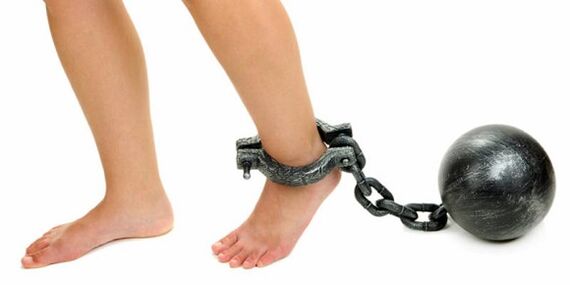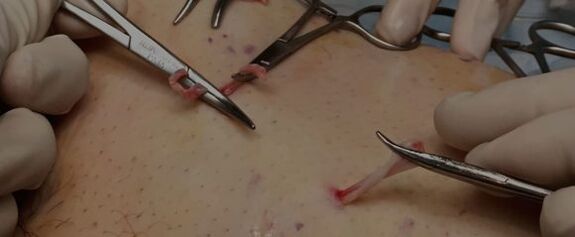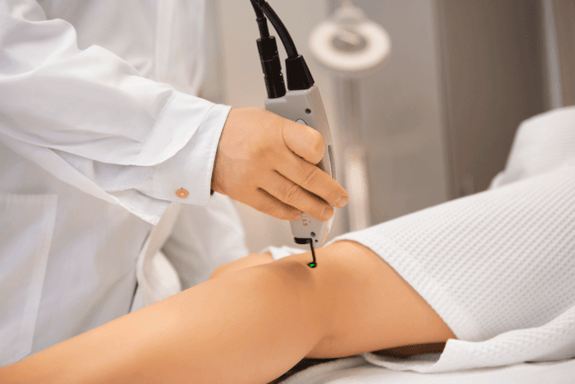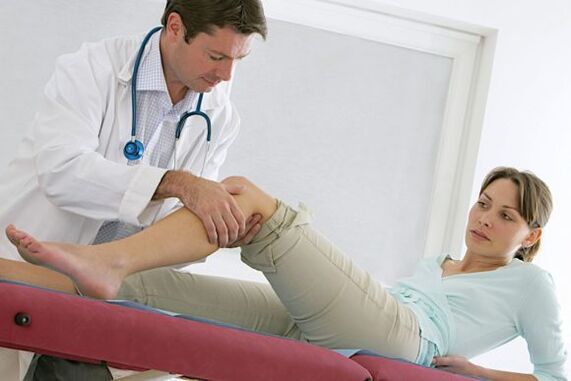Faced with problems such as varicose veins of the lower extremities, patients should not hesitate to see a doctor and start treatment. An experienced expert will conduct a thorough examination and draw a conclusion about which treatment strategy is best: conservative treatment or surgical treatment. If, for some reason, the drug cannot produce the desired effect on the patient's blood vessels, then the doctor will prescribe surgical intervention, which can already provide unconditional help.
Indications and whether surgery is required
Varicose vein extraction is a radical method for the treatment of diseased blood vessels, so its indications are appropriate.

Under the following circumstances, the operation will be proved to be reasonable:
- Varicose veins of the lower extremities, visible to the naked eye;
- Continuous severe swelling, discomfort, pain and heaviness in the legs or other parts, depending on the location of the pathological process;
- Existing varicose veins that directly threaten a part of the body can be complicated by more dangerous diseases (for example, thrombophlebitis, nutritional ulcers, or pulmonary embolism).
In a direct conversation with the doctor, he will be able to determine whether surgery is worthwhile and discuss what types of surgical interventions generally exist.
Contraindications for surgical treatment of varicose veins
Although there are strong indications, in many cases, surgery to remove varicose veins in the legs cannot be performed. For example, if the patient is in the final stage of varicose veins, surgical treatment is not always feasible. In this case, doctors focus on medication, but they cannot provide enough help.

Many other mandatory contraindications:
- There are skin diseases in the affected veins, such as eczema, pyoderma, dermatitis, etc.
- Serious diseases of the cardiovascular system-hypertension, coronary artery disease, heart failure;
- Acute inflammatory process in the blood vessels (phlebitis);
- Thrombosis or pulmonary embolism from previous metastasis;
- Eliminate the active process of atherosclerosis;
- Advanced age
- pregnancy period.
Patients should remember that in the case of taking drugs for other diseases, the attending physician must be notified.

Sclerotherapy technique
Sclerotherapy is a procedure based on the principle of injecting special substances into the affected blood vessels to further constrict and overgrow the blood vessels. The main advantage of this method is that the procedure does not require any incisions or surgical access.
The essence of the procedure is as follows: the doctor injects the hardened substance into the pathological blood vessel with the help of a syringe. During one stage of sclerotherapy, the specialist will perform 2 to 10 such injections. The effects do not appear at the same time-usually 2-8 weeks and several such procedures are required. Under the action of the sclerosing agent, the veins gradually narrowed, and then overgrowth and disappear.
There are two types of manipulation:
- Slightly hardened. It is reasonable in the initial stage of varicose veins, when smaller shallower blood vessels are involved in the process. In this case, the amount of hardener required is minimal.
- Echo hardened. It uses duplex scanning for deeper veins in order to most accurately determine the location of deep varicose veins.

Laser coagulation
Laser surgery for varicose veins is by far the most popular. This is because the operation itself is completed under local anesthesia, does not require large incisions and tissue trauma, and the effect is immediate.
The vascular surgeon should explain in detail how the operation is performed, but in general, its essence is to introduce a special laser light guide into the diseased blood vessel. A laser beam with its own wavelength passes through the device and acts on the blood vessel walls of varicose veins. Under its action, blood vessels clot and become blocked.
If the patient has varicose veins in the leg or groin area, this technique will be reasonable. In addition, laser coagulation will act more effectively on large blood vessels, which is why it is unreasonable to use this technique when small veins are damaged.

Ligation of the vein
Vascular ligation is a more thorough operation for varicose veins in the legs, requiring large incisions and direct surgical access.
Compared with the blood vessels in the pelvic area, leg surgery is more frequent. The saphenous vein ligation technique will be effective. The vascular surgeon enters the designated blood vessel at the point where the saphenous vein connects to the femoral vein. Next, the surgeon uses a special thread for bandaging.
For women, pelvic vein surgery can be performed. In this case, enter and ligate the ovarian vein.
Remove dilated blood vessels
The most common and proven surgical method is phlebectomy. Doctors do it almost every day, and it is more affordable than laser coagulation or sclerotherapy. This varicose vein surgery is performed under general anesthesia or epidural anesthesia.

In order to remove the dilated blood vessels, the surgeon only needs an incision of 0. 5 to 1 cm in length. After opening the access to the varicose vein area, the surgeon ligates the blood vessel, passes through it and removes it.
As a subspecies of this intervention, venuleectomy is different. It differs from traditional phlebectomy in that the surgeon needs a puncture instead of an incision to access the blood vessel. This operation is effective for superficial blood vessels with little impact. Its main advantage is that it does not leave any traces and appearance defects.
Peel off
Stripping is a subtype of phlebectomy, during which a special probe is used to remove the vein. As with a simple varicose vein resection, the surgeon makes an incision in the great saphenous vein and enters the blood vessel. Then the doctor makes another incision-in the middle leg or calf area.

By entering the upper passage of the great saphenous vein, a special probe-an extractor probe is introduced. The surgeon pre-wraps the mouth of the adjacent vein. The probe is passed along the entire length of the blood vessel to the lower incision and then used to remove the vein.
In stripping, several types of operations are also distinguished:
- Short peel. Not the entire blood vessel is eliminated, but only a certain area will have varicose veins.
- All of it. This type of varicose vein surgery allows you to get rid of a large area of diseased blood vessels and avoid recurrence.
Consequences of surgery and rehabilitation
With varicose veins, surgery will have the opposite effect and cause various complications. They should be separated according to the type of intervention performed:

- After sclerosing agent treatment, patients may experience itching, burning, skin discoloration, and edema at the injection site. Elevated body temperature and general weakness are possible. According to the regulations during the postoperative period, the symptoms will disappear within a few days.
- After receiving laser coagulation, the patient may feel tightness in the thigh area, slight bleeding, and increased body temperature. With proper treatment, the symptoms will disappear within a week.
- Vein ligation surgery itself may be complicated by trauma and bleeding.
- Phlebectomy and stripping can damage the nerves in the skin. This may be accompanied by loss of sensitivity, numbness in the legs, and pain at the incision site.
For all surgical treatments, there is a common complication-thrombosis. This is a dangerous process, but the possibility of occurrence due to any operation is very low.
In order to avoid the above complications and shorten your recovery period as much as possible, you must follow the health and vascular care recommendations during the postoperative period.

According to the regulations during the postoperative period, the symptoms will disappear within a few days.
Experts recommend the following advantages and disadvantages:
- In the first week after the operation, you must immediately put on special pressure underwear-stockings, tights, socks, for this you can also use ordinary elastic bandages.
- Eliminate bad habits-drinking, smoking, drugs.
- Avoid baths and saunas, and don't bathes that are too hot.
- In the place where the surgery is performed, no cosmetic surgery and various cosmetics are allowed.
- Avoid strenuous physical activity. If the patient has participated in any type of exercise (especially strenuous exercise) before treatment, then after the operation, the heavy load should be forgotten for at least 5-8 weeks. In the future, if it is possible to continue high-intensity exercise, you should consult your doctor.
- Do not exceed 15-30 minutes of preventive exercise every day.
- Adhere to the medication prescription of the phlebologist-regularly preventive use of anticoagulants, intravenous injections, non-steroidal anti-inflammatory drugs, thrombolytics and other drugs.
In general, all these operations have been well received by doctors and patients. Which treatment method is suitable for a particular patient only needs to be decided by the attending doctor.























